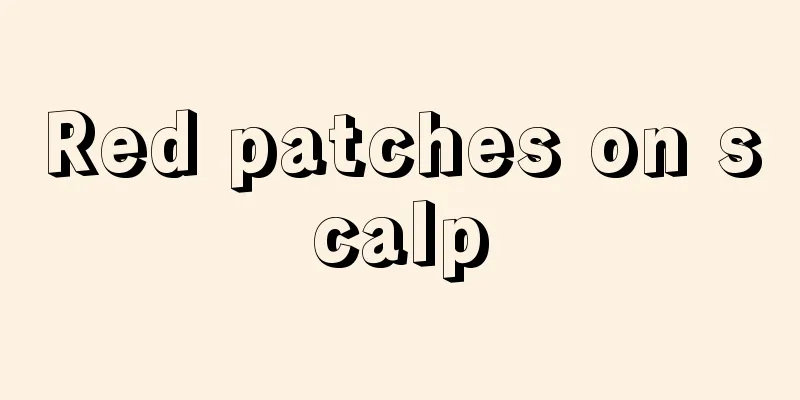Red patches on scalp

|
If red patches appear on the scalp, you must be careful as it may be scalp psoriasis, because this disease is a common inflammatory disease. When it occurs, it will not only cause itchy scalp, but also the appearance of some square-like things on the scalp. It will also cause dandruff and a lot of hair loss, which will make our hair very unhealthy, so we should check and treat it according to the symptoms. Symptoms and signs Yellow ringworm usually develops in childhood and can continue into adulthood without healing on its own. This is because unsaturated fatty acids have no inhibitory effect on the growth and reproduction of Trichophyton thrush. Tinea alba mainly occurs in preschool children. Due to the increase in sebum secretion during puberty, the unsaturated fatty acids in the sebum inhibit the pathogens of tinea versicolor, so it can heal itself by puberty. Black spot ringworm can occur in both children and adults. 1. Yellow ringworm is called bald sore, "bald head sore", "fat sticky sore", etc. in traditional Chinese medicine, and is commonly known as "bald head". After Trichophyton thrush invades the stratum corneum of the scalp, it grows and multiplies rapidly, quickly forming needle-shaped or mung bean-sized papules at the hair roots, which then turn into pustules. After the pustules dry up, sulfur-colored dry scabs are formed. The skin lesions expand, the scabs fuse and become thicker, the edges curl up, the center adheres to the scalp and is slightly concave, and a hair shaft passes through the center, giving it a disc-like appearance, which is called a disc-shaped yellow ringworm scab. The scab of yellow ringworm is composed of Trichophyton thrush and desquamated epithelial cells. It is fragile and highly contagious. If you peel off the scab forcefully, you will see a bright red moist erosion or shallow ulcer underneath, which is very prone to secondary bacterial infection, emitting a rat urine-like odor and accompanied by swollen nearby lymph nodes. Due to the invasion of pathogens, the hair becomes dry, dull or crooked, and easy to pull out, but there is no breakage. Finally, the hair follicles are destroyed, leaving behind atrophic scars and permanent baldness. Disc-shaped pityriasis scabs, atrophic scars, and permanent alopecia are the three main clinical features of pityriasis versicolor (Figure 1). If tinea versicolor is not treated promptly, the skin lesions will continue to develop and may affect the entire scalp, forming extensive alopecia scars, but a 1-2 cm band of normal hair may remain at the hairline, and a few normal hairs may be scattered in the scars. The itching is intense and may spread on its own due to scratching. Trichophyton may occasionally invade the smooth skin of the trunk and limbs (Figure 2) and the nail plate. There may be yellow tinea scabs and skin atrophy, and the nail lesions are difficult to distinguish from other onychomycosis. 2. Tinea alba is called white baldness and hair tinea in traditional Chinese medicine. As recorded in the Complete Book of Surgery, "Hair tinea is a bald spot that gradually develops on the head. After a long time, it spreads away, becomes dry and itchy. It is caused by yin deficiency and excessive heat. When shaving the head, wind evil invades the pores and skin, gathers and does not disperse, and blood and qi are not flowing." It initially manifests as follicular papules covered with white scales. The skin lesions gradually expand to form white scaly patches that are round or oval in shape with clear boundaries and no obvious inflammation (Figure 3), with slight itching or no subjective symptoms. If untreated, small satellite lesions may appear around the patchy lesions. Due to the infestation of fungal spores, the roots of the hairs in the affected area are surrounded by a characteristic scaly sheath which is not easily removed and is called the fungal sheath. The affected hair is dry and dull, breaks off when it grows about 4 to 5 mm out of the scalp, and is very easy to pull out. Grayish-white scaly patches, fungal sheaths and broken hair are the three main clinical features of tinea vitiligo (Figures 4, 5). Some patients may also have concurrent kerion, tinea corporis, onychomycosis and granuloma. |
<<: How long does it take for ginger to take effect on the scalp?
>>: Is it normal to have a stinging scalp after dyeing hair?
Recommend
I have a lump on the side of my neck, what is going on?
Many people don’t know why pimples on the neck gr...
How to scrape and remove freckles, say goodbye to melasma
As women age, chloasma will appear on their faces...
Tell you about the common early symptoms of cervical cancer
Among the many cancer diseases, cervical cancer i...
Will I die if I have my teeth pulled out?
The process of tooth extraction is also quite pai...
Skin cancer patients are advised to choose treatment methods as early as possible
Now, the incidence of skin cancer in our country ...
Why don't you take medicine to reduce tooth inflammation
The health of teeth has a great impact on life, b...
What are the symptoms of recurrence after ovarian cancer surgery
The ovaries of women play a very important role. ...
How to relieve the red bloodshot eyes caused by myopia
Nowadays, there are more and more people sufferin...
What are the main symptoms of thyroid cancer
The main symptoms of thyroid cancer include neck ...
Is it better to puncture or operate on a renal cyst?
Renal cyst is not a hereditary disease. The main ...
Sympathetic nervous system excitement insomnia
Many people suffer from insomnia due to work pres...
6 issues that should be paid attention to in lymphoma chemotherapy
Before chemotherapy, lymphoma patients should und...
Do benign tumors have blood flow signals?
Benign tumors are a very common symptom of stroke...
What is thyroid cancer?
What is thyroid cancer? The thyroid gland is a pa...
How to clean hair dye from your head
Dyeing hair is a common situation in normal times...









